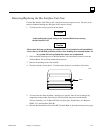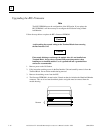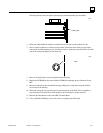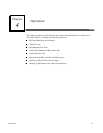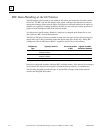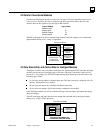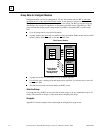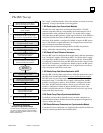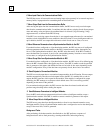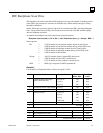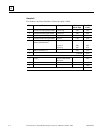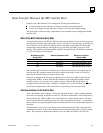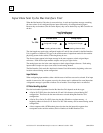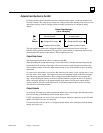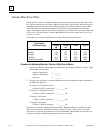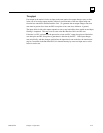
4-6 Field Control™ Genius® Bus Interface Unit User’s Manual
–
October 1999 GFK-0825F
4
6 Move Input Data to the Communications Buffer
The BIU then moves all current discrete and analog input values presently in its network map into a
memory buffer, in preparation for transmitting them on the Genius bus.
7 Move Output Data from the Communications Buffer
After moving the inputs into the communications buffer, the BIU moves newly-received output
data from the communications buffer. It combines this data with any existing forced discrete output
states and analog values and places the combined data in its discrete (%Q) and analog (%AQ)
output memories, as defined in the BIU I/O map.
If the BIU is not receiving outputs from the bus, it sets mapped output references for conventional
modules to their default/hold last state conditions, then forces them. For any intelligent module set
up for defaults, the BIU sets output table references to their forced state or value, or to zero.
8 Move Reference Parameters from a Synchronization Module to the BIU
If a module has been configured as a Synchronization module, the BIU next moves all configured
reference parameter data from the module to the BIU's internal memory tables, then applies any
forces. If the Synchronization module is busy, the BIU waits then retries. If the BIU is unable to
move the data after five seconds, it sets its own corresponding memory locations to zero or holds
its last states, as configured for the Synchronization module.
9 Move Group Data from Synchronization Module to BIU
If a module has been configured as a Synchronization module, the BIU moves all its defined group
data to the BIU's internal tables, then applies any forces. If the BIU is unable to read the specified
data, it generates a fault report, and defaults the data to 0 or holds its last states, depending on the
module's configuration. If any of the data items are presently forced, those forces are retained.
10 Send Outputs to Conventional Modules
The BIU next sends output data to conventional output modules in the I/O station. Discrete output
modules automatically echo the received outputs back to the BIU. If a module fails to echo its
outputs the BIU generates a fault report for that module. If the module is configured for output
defaulting, the BIU attempts to set outputs to their default states. This is not always possible,
depending on the nature of the problem.
For conventional analog modules, the BIU converts data from the selected scaled units and
performs range checking before sending the outputs.
11 Send Reference Parameters to Intelligent Modules
Next, the BIU sends reference parameter data from its tables to intelligent modules except a
Synchronization module. If the BIU is unable to contact a module it generates a fault report.
12 Move Group Data to Intelligent Modules
The BIU moves group data from intelligent modules or from its own internal memories to any
intelligent modules, except a Synchronization module, that is configured to receive data during that
sweep. If the move fails, a fault is generated.
Background Tasks
After performing all the data transfers described above, the BIU performs a sequence of
background tasks such as fault processing, scanning module IDs, and testing memory.



